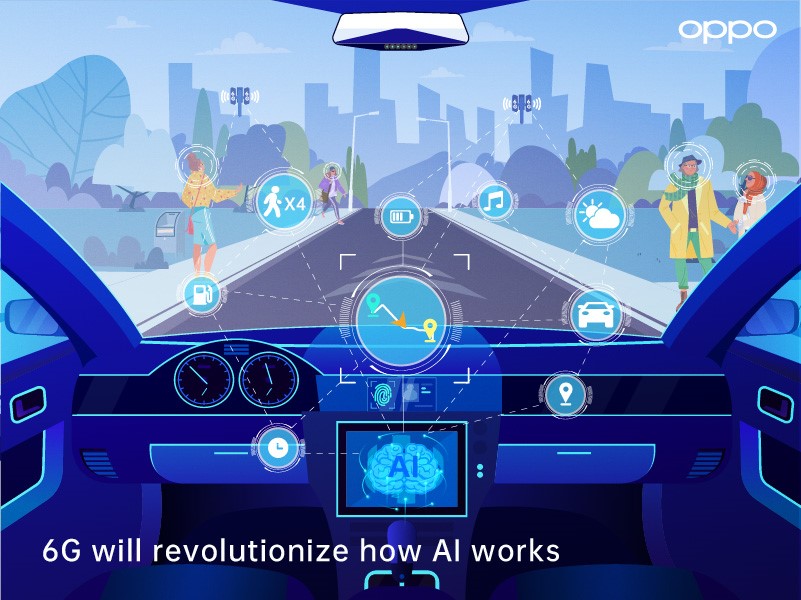Smart device manufacturer OPPO on Tuesday released 6G AI-Cube Intelligent Networking, a paper outlining the future role of artificial intelligence (AI) in the design of next-generation communication networks.
The Chinese electronics manufacturer based in Guangdong Province, has established a team to conduct preliminary research into 6G service and technology requirements, key technologies and system features.

OPPO's future vision of 6G technology(Photo provided to the People's Daily)
A key conclusion of the paper is that 6G will reshape for the better the way people interact with AI.
Smart 6G devices will download and deploy AI algorithms to create new immersive experiences while also constantly collecting data to feed more advanced AI models, the paper says.
The paper first outlines how today’s limited computing power and storage capacity of smart devices make it too difficult for them to employ large, general AI algorithms. Today’s AI also cannot fully cope with the massive data demands of individual smart devices.

6G will revolutionize how AI works (Photo provided to the People's Daily)
But through 6G networks, the paper suggests, AI will take on multiple roles including traditional base station, database, AI model repository and application server.
For example with autonomous vehicles, 6G networks will assign the most appropriate AI algorithm and the optimal communication connection based on the location of the vehicle and the physical environment such as the time of day or weather.
The vehicle will download and run AI algorithms based on the countless experiences of other vehicles and devices, allowing the vehicle to provide the safest and most comfortable journey for the passenger.
“6G will fundamentally revolutionize how AI infers, learns, interacts, and is applied, solving traditional problems faced in AI development, such as data silos and user privacy,” the paper noted.
A more technical section of the paper introduces the “AI-Cube” through which AI architecture will enhance the 6G network on two levels: network functionality and high-level networking capability.
In these two ways, 6G networks will self-optimize, dynamically administer themselves and intelligently distribute resources.
"Mobile communication technology evolves in decade-long periods, and standardization of the next generation of communication technology is expected to begin in 2025, with commercial implementation following in around 2035," Henry Tang, chief 5G scientist at OPPO, was quoted as saying in the press release.
"Looking towards 2035, OPPO expects the number of intelligent agents in the world to far exceed the number of humans.”
6G would “serve the needs not only of people but of all forms of intelligence and their various interactions,” Tang said. “With this end goal in mind, we have carried out the early technical research and system design."
OPPO will continue researching 6G technology, the paper concludes. As a contributor to the popularization of 5G, OPPO will also work with its partners to promote the mass commercialization of 5G and the development of the “Internet of Experience.”


